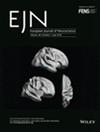Differential Monetary Rewards During Category Learning Increase Activity in Striatal Regions
Abstract
How is the presence of reward reflected in activity in the corticostriatal networks underlying human categorization? We examined how activity in different regions of the striatum differed on trials in which participants received a reward for correct performance versus trials with no associated reward. Participants learned to categorize abstract fractal images as members of two different categories via trial and error with feedback. Images were associated with different monetary reward values (high, low and none) that could be obtained by the participant for correct categorization. We found that neural activity in the caudate nucleus (head and body) and putamen was greater for rewarded stimuli in comparison with nonrewarded. In addition, reward resulted in greater activity across the cortical regions underlying categorization, including areas of the intraparietal sulcus (IPS) associated with stimulus-response mapping, the frontoparietal salience network and visual cortical areas associated with object and form processing. Reward effects were found both during early learning when stimuli were novel and when participants categorized stimuli on which they had been extensively trained prior to the scan. These results have implications for understanding how reward and categorization are integrated in the striatum.

 求助内容:
求助内容: 应助结果提醒方式:
应助结果提醒方式:


